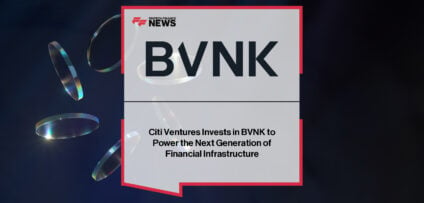Breaking News

Why are Banks so Vulnerable to Money Laundering?
The amount of money that is laundered annually is estimated to be between $800 billion and $2 trillion USD, with much of that being used to fund nefarious activity such as trafficking and terrorism. All banks have Anti-Money Laundering (AML) systems in place but they are becoming increasingly ineffective and inefficient at identifying and preventing illegal activity.
Many banks implemented their current AML systems quickly in response to increased regulatory pressure. Investment was focused on systems to protect retail products, with banks often choosing to repurpose those same models for other areas of their business. These legacy, preconfigured systems are unable to detect the complex schemes perpetrated by serious organised money laundering gangs and as a result, laundered money is increasingly going unrecognised.
Unsophisticated Systems
In order to transform illegal profits into ostensibly legitimate assets, money launderers will typically use a combination of fake names and addresses, shell companies and intentionally complicated chains of international money movements. This allows them to prevent a trail from occurring that links their final assets to their illegal origins.
Their success has been largely contingent on the fact that existing systems are not sophisticated enough to notice when this is happening. Systems are often looking at a thin slice of the data – they are unable to see or risk assess beyond an individual transaction, with little understanding of the customer, nor the corporate structure, that is moving the money. Put simply, they cannot make all the connections that need to be made.
False Positives
The analytics typically used within these systems are simple rules, dictated by the regulator. They fail to make use of more advanced analytical methods available and are therefore prone to triggering false positives, providing high numbers of low quality alerts.
The problem is that under compliance legislation, banks are legally obliged to investigate every alert created by their AML system, regardless of how unlikely they may seem. Essentially, the analysts who are investigating these alerts are overwhelmed by a huge amount of inaccurate leads and having to trawl through them is vastly reducing the likelihood of them picking up on a case of genuinely suspicious activity.
Inflexibility
Inflexible systems further exacerbate the inefficiencies of these systems. Most are unable to support the addition of new products, data points and typologies without significant manual effort. The inevitability of technological developments mean that flexibility is key. Useful data points are continuously emerging and it is important that they can easily be incorporated. Inability to adapt to such development leads to an eventual and inevitable degradation of model performance, further reducing the success of the model in identifying illegal activity.
A new approach
Recently emerging processes such as ‘contextual monitoring’ have been able to address these issues by taking a much more holistic approach to the wide range of data available. By using dynamic entity and network based techniques, across a wide range of internally and externally availably data, banks have been far more successful in making connections between parties that have intentionally tried to disassociate from one another.
Connections can be made from information such as names, contact information and company structures, as well as derived from transactional money flows. Utilisation of sophisticated analytical methods across this holistic view, such as dynamic segmentation, peer group analysis and anomaly based detection, further drives accurate identification of risk. For example, some banks are applying machine-learning processes to be able to identify similarities in confirmed cases of laundering, and therefore use this information to better identify such activity in other cases.
Money laundering is an undeniable and increasingly pertinent issue. In the face of global terrorism, questions of how such organisations are being funded is one that is regularly being asked by both the public and politicians alike. Existing AML systems are simply not sophisticated enough to generate genuine insights into these activities. Inefficiencies are leading to enormous amounts of false positive alerts which are, in turn, using up valuable analyst time. Entry-level analytical processes and rigid system models are leaving masses of data incorrectly interpreted.
In order to address these growing issues, banks must be willing to embrace a more innovative approach. Enabling a holistic and comprehensively networked view of the data is proving to be much more effective in identifying genuinely suspicious activity, thus allowing for a deeper investigation by analysts and ultimately taking greater action in the fight against money laundering.
Written by Laura Hutton, Executive Director at Quantexa
- EXCLUSIVE: “Passion Project” – Brice van de Walle, Mastercard in ‘The Fintech Magazine’ Read more
- FreedomPay Drives Global Merchant Innovation Read more
- FIS Brings AI-Powered Advancements to Seamless, Personalized Digital Banking Experiences Read more
- Citi Ventures Invests in BVNK to Power the Next Generation of Financial Infrastructure Read more
- Nearly Two-Thirds of Global Retailers Say Payment Method Flexibility Drives Revenue Growth, ACI Worldwide Survey Finds Read more













